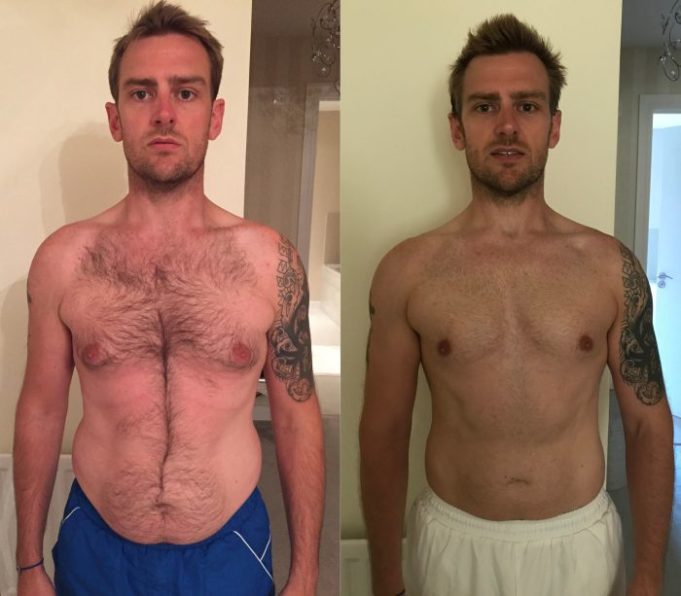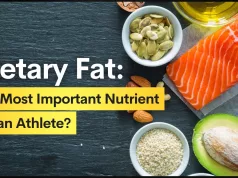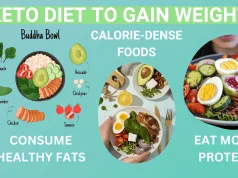How to lose weight without starving yourself is a question many ask, seeking a sustainable path to a healthier physique. This journey doesn’t involve extreme measures or deprivation, but rather a shift towards balanced eating, mindful movement, and a positive mindset.
This guide explores practical strategies for achieving sustainable weight loss, focusing on strategies that empower you to make lasting changes.
Understanding your body’s needs, making informed food choices, and incorporating regular exercise are crucial components of this approach. We’ll delve into the importance of calorie awareness, the power of nutrition, and the benefits of an active lifestyle. Along the way, we’ll address common challenges, offering tips for staying motivated and overcoming obstacles.
Understanding Sustainable Weight Loss: How To Lose Weight Without Starving Yourself
Losing weight and keeping it off is a journey, not a sprint. It’s about making lasting changes to your lifestyle, not just about dropping pounds quickly. Sustainable weight loss focuses on building healthy habits that you can maintain over the long term, leading to a healthier and happier you.
The Importance of Sustainable Weight Loss
Crash diets often lead to rapid weight loss, but they’re rarely sustainable. They typically involve severe calorie restriction, which can leave you feeling deprived and lead to unhealthy eating patterns. Once you return to your normal eating habits, the weight often comes back, sometimes even more than before.
Sustainable weight loss, on the other hand, is about making gradual, long-term changes to your diet and exercise habits. It’s about finding a balance that you can maintain over time, without feeling restricted or deprived.
Examples of Sustainable Weight Loss Strategies
- Focus on whole, unprocessed foods:Instead of relying on packaged foods and processed snacks, prioritize fruits, vegetables, lean proteins, and whole grains. These foods are nutrient-dense and provide sustained energy, making it easier to stick to your weight loss goals.
- Control portion sizes:While it’s important to eat healthy foods, it’s equally important to control portion sizes. This can help you avoid overeating and consuming too many calories. Use smaller plates, measure out portions, and listen to your body’s hunger and fullness cues.
- Incorporate regular physical activity:Exercise is essential for weight loss and overall health. Aim for at least 30 minutes of moderate-intensity exercise most days of the week. This could include brisk walking, jogging, swimming, or cycling.
- Find a support system:Having a support system can make it easier to stay motivated and accountable. Join a weight loss group, talk to a friend or family member about your goals, or consider working with a registered dietitian or certified personal trainer.
- Be patient and persistent:Sustainable weight loss takes time and effort. Don’t get discouraged if you don’t see results immediately. Focus on making small, consistent changes to your lifestyle, and celebrate your progress along the way.
Calorie Awareness and Management
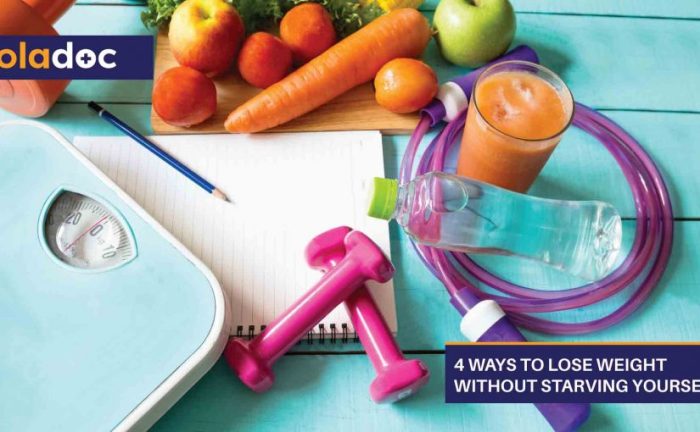
Understanding your calorie needs is crucial for sustainable weight loss. A calorie deficit, where you consume fewer calories than you burn, is the foundation of weight loss. This section will guide you on calculating your daily calorie needs, tracking your intake, and creating a sample meal plan that fits within a calorie deficit.
Calculating Your Daily Calorie Needs
Your daily calorie needs are influenced by factors such as your age, gender, activity level, and body composition. You can use online calculators or consult a registered dietitian to determine your Basal Metabolic Rate (BMR). Your BMR represents the number of calories your body burns at rest.
To calculate your daily calorie needs, you need to factor in your activity level.
The American Council on Exercise (ACE) provides a simple method:
Sedentary
BMR x 1.2
Lightly Active
BMR x 1.375
Moderately Active
BMR x 1.55
Losing weight doesn’t have to mean feeling constantly hungry. There are ways to shed pounds without drastic dietary restrictions. For instance, you can explore alternative methods like adjusting your sleep patterns or managing stress levels, which can impact your metabolism.
If you’re curious about these unconventional approaches, check out this article on How to lose weight without exercise and diet. Ultimately, the key is finding a sustainable approach that works for your individual needs and lifestyle.
Very Active
BMR x 1.725
Extremely Active
BMR x 1.9
For example, if your BMR is 1,500 calories and you are moderately active, your daily calorie needs would be approximately 2,325 calories (1,500 x 1.55).
Tracking Calories
Tracking your calorie intake is essential to ensure you stay within your daily target. There are several methods you can use:
- Food Diaries:Keep a written record of everything you eat and drink, along with the corresponding calorie count.
- Calorie-Tracking Apps:Numerous apps are available that allow you to scan barcodes, track your meals, and monitor your calorie intake.
- Online Calorie Calculators:Many websites offer calorie calculators that allow you to enter your food items and receive an estimated calorie count.
Consistency is key when tracking your calorie intake. Aim to track your meals and snacks daily to maintain accuracy.
Sample Daily Meal Plan
Here is a sample daily meal plan that provides approximately 1,500 calories, suitable for a person aiming for a calorie deficit:
| Meal | Food Items | Approximate Calories |
|---|---|---|
| Breakfast | 1 cup Greek yogurt with 1/2 cup berries and 1/4 cup granola | 300 |
| Lunch | Large salad with 4 oz grilled chicken breast, mixed greens, vegetables, and a light vinaigrette dressing | 400 |
| Dinner | 4 oz baked salmon with 1 cup roasted vegetables and 1/2 cup brown rice | 500 |
| Snacks | 1 apple with 2 tablespoons peanut butter, 1 cup low-fat cottage cheese | 300 |
Remember that this is just a sample plan, and individual calorie needs and preferences vary. It’s important to consult with a registered dietitian or a qualified healthcare professional for personalized advice and meal planning.
Nutrition for Weight Loss
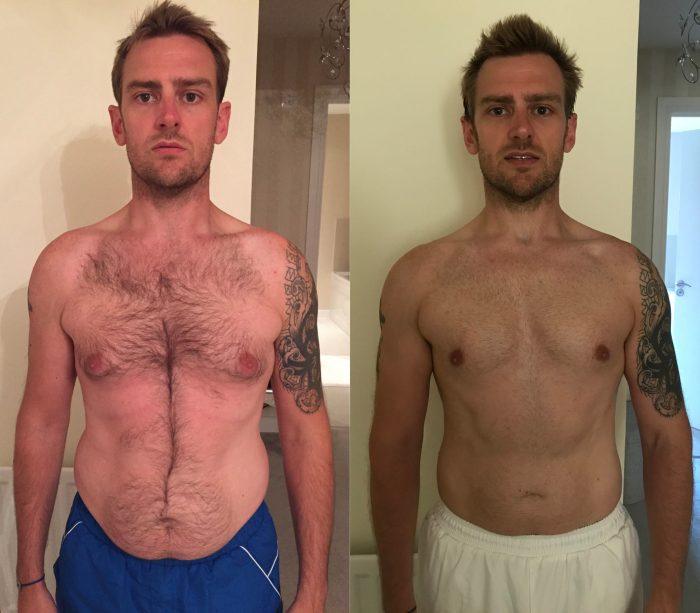
Fueling your body with the right nutrients is essential for successful and sustainable weight loss. A balanced diet plays a crucial role in providing the energy you need while supporting your overall health and well-being.
Importance of a Balanced Diet
A balanced diet for weight loss focuses on consuming nutrient-rich foods that provide essential vitamins, minerals, and fiber while keeping calorie intake in check. This approach prioritizes:
- Fruits and Vegetables: These are packed with fiber, vitamins, and minerals, which promote satiety and support a healthy metabolism. They are naturally low in calories, making them ideal for weight management. Aim for at least five servings of fruits and vegetables daily.
- Whole Grains: Whole grains like brown rice, quinoa, and whole-wheat bread provide complex carbohydrates, fiber, and essential nutrients. They digest slowly, keeping you feeling full for longer and preventing blood sugar spikes.
- Lean Protein: Protein is essential for building and repairing tissues, and it plays a crucial role in satiety. Choose lean protein sources like fish, chicken, beans, lentils, and tofu. Protein helps stabilize blood sugar levels, preventing cravings and overeating.
Common Food Traps
While focusing on a balanced diet, it’s essential to be aware of common food traps that can hinder your weight loss efforts. These traps often involve:
- Processed Foods: Processed foods are often high in calories, unhealthy fats, sugar, and sodium, making them easy to overeat. They also lack essential nutrients and can contribute to inflammation and other health problems.
- Sugary Drinks: Sugary drinks like soda, juice, and sweetened coffee are packed with empty calories and provide no nutritional value. They can contribute to weight gain and increase the risk of chronic diseases.
- Large Portions: Overeating, even healthy foods, can lead to excess calorie intake and hinder weight loss. Pay attention to portion sizes and avoid super-sizing meals.
- Emotional Eating: Eating in response to stress, boredom, or sadness can lead to unhealthy food choices and overconsumption. Find healthy ways to manage emotions and avoid using food as a coping mechanism.
Making Healthy Food Choices While Eating Out
Dining out can be challenging when trying to maintain a healthy diet. However, with a few strategies, you can make healthier choices:
- Check the Menu Online: Before heading out, browse the menu online and identify healthier options. Look for grilled, baked, or steamed dishes, and choose lean protein sources, whole grains, and plenty of vegetables.
- Ask for Modifications: Don’t hesitate to ask for modifications, such as requesting your meal without added salt, sauce, or butter. You can also ask for grilled instead of fried options.
- Share Dishes: Sharing a meal with a friend or family member can help you control portion sizes and reduce calorie intake. You can also order appetizers or salads as your main course.
- Avoid Bread Baskets: Bread baskets can easily add extra calories to your meal. If you’re tempted, ask for a small portion or skip it altogether.
- Choose Water: Stick to water or unsweetened tea instead of sugary drinks. Water helps keep you hydrated and feeling full.
Portion Control
Portion control is a crucial aspect of managing calorie intake. Here are some tips for practicing portion control:
- Use Smaller Plates: Using smaller plates can create the illusion of a larger portion, making you feel more satisfied with less food.
- Measure Food: Measure out your portions, especially for calorie-dense foods like pasta, rice, and cheese. This helps you stay mindful of your intake.
- Read Food Labels: Pay attention to serving sizes and calorie counts on food labels. This information can help you make informed decisions about portion sizes.
- Eat Slowly: Give your body time to register fullness. Chew your food thoroughly and take breaks between bites. This can help you avoid overeating.
Nutrient-Dense Foods for Satiety
Certain foods are particularly effective at promoting satiety and reducing cravings. These nutrient-dense foods help you feel full for longer, reducing the urge to snack between meals:
- Fiber-Rich Foods: Foods high in fiber, such as fruits, vegetables, whole grains, and legumes, absorb water in the digestive tract, creating a feeling of fullness.
- Protein-Rich Foods: Protein takes longer to digest than carbohydrates, promoting a sustained feeling of fullness. Include lean protein sources like fish, chicken, beans, lentils, and tofu in your meals.
- Water: Staying hydrated is essential for feeling full and satisfied. Drink water throughout the day, especially before meals.
- Healthy Fats: Unsaturated fats, found in avocados, nuts, seeds, and olive oil, promote satiety and support a healthy metabolism.
Exercise for Weight Loss
Exercise is a crucial component of a sustainable weight loss journey, working in tandem with a healthy diet to create a calorie deficit. Engaging in regular physical activity not only helps you burn calories but also boosts your metabolism, making it easier to maintain a healthy weight in the long run.
Types of Exercise for Weight Loss
Different types of exercise contribute to weight loss in various ways.
- Cardiovascular Exercise, often referred to as cardio, is excellent for burning calories and improving cardiovascular health. Examples include running, swimming, cycling, and dancing. Engaging in moderate-intensity cardio for at least 150 minutes per week is generally recommended for weight loss.
- Strength Traininginvolves using weights or resistance to build muscle mass. Muscle tissue burns more calories at rest than fat tissue, so increasing muscle mass can help boost your metabolism and contribute to weight loss. Strength training exercises include weightlifting, bodyweight exercises, and resistance band workouts.
Aim for at least two strength training sessions per week, targeting all major muscle groups.
- High-Intensity Interval Training (HIIT)is a form of exercise that alternates between short bursts of intense activity and periods of rest or low-intensity activity. HIIT workouts are highly effective for burning calories and improving cardiovascular fitness in a shorter amount of time. Examples include sprinting, burpees, and jumping jacks.
Losing weight doesn’t mean depriving yourself. A balanced diet and regular exercise are key. If you’re looking to target specific areas, like your stomach and thighs, you can find helpful tips on how to lose weight in your stomach and thighs.
Remember, consistency is crucial for sustainable weight loss, so focus on making healthy choices that you can maintain long-term.
Sample Workout Routine
Here is a sample workout routine that incorporates various exercise types:
- Warm-up(5 minutes): Light cardio, such as jogging or jumping jacks, to prepare your body for exercise.
- Cardio(20 minutes): Choose a cardio activity you enjoy, such as running, cycling, or swimming. Aim for a moderate intensity level.
- Strength Training(20 minutes): Perform exercises that target all major muscle groups, such as squats, lunges, push-ups, and rows. Use weights or resistance bands to challenge your muscles.
- Cool-down(5 minutes): Gentle stretching to help your body recover and reduce muscle soreness.
Finding an Exercise Routine You Enjoy
Finding an exercise routine that you enjoy is essential for long-term adherence.
- Experiment with Different Activities: Try out various types of exercise to find what you find enjoyable and motivating. There are countless options available, so don’t be afraid to step outside your comfort zone.
- Incorporate Activities You Already Enjoy: If you enjoy dancing, swimming, or hiking, incorporate those activities into your routine. This way, exercise won’t feel like a chore but rather a fun and enjoyable part of your day.
- Find a Workout Buddy: Having a workout partner can provide accountability, motivation, and social support, making it more likely that you’ll stick to your exercise plan.
Overcoming Exercise Barriers
It’s common to encounter obstacles that make it difficult to stick to an exercise routine.
- Lack of Time: Schedule exercise into your day like any other important appointment. Even short bursts of activity can be beneficial. Aim for at least 30 minutes of moderate-intensity exercise most days of the week.
- Lack of Motivation: Set realistic goals and start with small steps. Reward yourself for progress and focus on the positive benefits of exercise, such as improved mood, energy levels, and overall health.
- Lack of Resources: There are many affordable and accessible ways to exercise, such as walking, running, or bodyweight workouts. Consider joining a gym or taking advantage of free community fitness classes.
Mindset and Behavior Changes
Sustainable weight loss is not just about calories and exercise; it’s also about cultivating a positive mindset and making lasting behavioral changes. By adopting a healthy approach to weight management, you can create a more positive relationship with your body and achieve your weight loss goals.
Losing weight doesn’t require drastic measures like starvation. Instead, focus on making sustainable changes to your diet and exercise routine. For a quick boost, you can check out this article on how to lose weight in a week naturally , but remember that lasting results come from long-term commitment to healthy habits.
Setting Realistic Goals, How to lose weight without starving yourself
Setting realistic weight loss goals is crucial for long-term success. Aiming for a healthy weight loss of 1-2 pounds per week is a sustainable and achievable target. Rapid weight loss can often be unsustainable and lead to yo-yo dieting.
Developing a Positive Mindset
Developing a positive mindset is essential for weight loss. Negative self-talk can sabotage your efforts and make it harder to stick to your goals. Here are some strategies for cultivating a positive outlook:
- Focus on the benefits:Instead of focusing on the negatives, concentrate on the positive aspects of weight loss, such as increased energy, improved health, and enhanced self-confidence.
- Challenge negative thoughts:When negative thoughts arise, challenge them by asking yourself if they are truly accurate. Replace them with positive affirmations.
- Practice self-compassion:Be kind to yourself and avoid harsh self-criticism. Everyone makes mistakes, and it’s important to forgive yourself and move on.
Identifying Emotional Triggers for Overeating
Understanding your emotional triggers for overeating is essential for breaking the cycle. Common emotional triggers include stress, boredom, sadness, and loneliness.
- Identify your triggers:Keep a food journal to track your eating habits and identify situations or emotions that lead to overeating.
- Develop healthy coping mechanisms:Instead of reaching for food, find healthy ways to manage your emotions, such as exercise, meditation, spending time with loved ones, or engaging in a hobby.
- Seek professional help:If you struggle with emotional eating, consider seeking professional help from a therapist or counselor.
The Role of Sleep, Stress Management, and Hydration
Sleep, stress management, and hydration play a crucial role in weight loss.
- Prioritize sleep:Aim for 7-9 hours of quality sleep per night. Sleep deprivation can disrupt hormone balance and increase cravings for unhealthy foods.
- Manage stress:Stress can lead to overeating and weight gain. Find healthy ways to manage stress, such as exercise, yoga, meditation, or spending time in nature.
- Stay hydrated:Drinking plenty of water can help you feel full, reduce cravings, and boost your metabolism.
Building a Support System
Having a support system can significantly enhance your weight loss journey.
- Join a support group:Connect with others who are also working on their weight loss goals. Sharing experiences and challenges can provide motivation and accountability.
- Find an accountability partner:Choose a friend or family member who can support you and help you stay on track. You can check in with each other regularly and provide encouragement.
- Seek professional guidance:Consider working with a registered dietitian or a certified personal trainer for personalized support and guidance.
Addressing Common Weight Loss Challenges
Weight loss is a journey that comes with its fair share of obstacles. It’s not always a smooth path, and you might encounter setbacks or challenges along the way. Understanding these challenges and having strategies to overcome them is crucial for achieving sustainable weight loss.
The Role of Metabolism in Weight Loss
Metabolism refers to the chemical processes that occur in your body to sustain life. It involves converting food into energy and using this energy for various bodily functions. A faster metabolism burns more calories at rest, making it easier to lose weight.
Here are some tips to boost your metabolism:
- Eat regular meals and snacks: Skipping meals can slow down your metabolism. Aim for 3-5 meals and snacks per day to keep your metabolism humming.
- Include protein in every meal: Protein takes longer to digest than carbohydrates, which helps to boost your metabolism. Aim for a palm-sized portion of protein at each meal.
- Engage in regular exercise: Exercise helps to increase muscle mass, which boosts your metabolism. Aim for at least 30 minutes of moderate-intensity exercise most days of the week.
- Drink plenty of water: Water helps to flush out toxins and keeps your metabolism running smoothly. Aim for 8 glasses of water per day.
- Get enough sleep: Sleep deprivation can slow down your metabolism. Aim for 7-8 hours of sleep per night.
Overcoming Plateaus and Maintaining Motivation
Weight loss plateaus are a common experience. This is when you stop seeing results despite following your diet and exercise plan. Here are some strategies to overcome plateaus:
- Increase your calorie deficit: If you’ve been maintaining a consistent calorie deficit, try reducing your daily calorie intake by 100-200 calories.
- Increase your exercise intensity or duration: Challenge your body with more intense workouts or longer exercise sessions.
- Try a new type of exercise: If you’ve been doing the same routine for a while, your body might have adapted. Introduce a new type of exercise to challenge your muscles and burn more calories.
- Adjust your macro intake: Experiment with different macronutrient ratios (protein, carbohydrates, and fats) to see if it makes a difference.
- Stay patient and consistent: Plateaus are temporary. Don’t give up on your weight loss journey. Keep pushing forward, and you’ll eventually break through the plateau.
Listening to Your Body and Recognizing Signs of Overtraining or Calorie Restriction
It’s crucial to listen to your body’s signals. Overtraining and excessive calorie restriction can have negative consequences on your health and hinder your weight loss progress.Here are some signs to watch out for:
- Fatigue and exhaustion: Feeling constantly tired and lacking energy can be a sign of overtraining or calorie restriction.
- Decreased performance: If you notice a decline in your exercise performance, it could be a sign that you’re not recovering adequately.
- Increased stress and irritability: Calorie restriction can lead to hormonal imbalances, which can contribute to increased stress and irritability.
- Sleep disturbances: Difficulty sleeping or frequent awakenings can be a sign of overtraining or calorie restriction.
- Muscle soreness: Persistent muscle soreness that doesn’t improve with rest can be a sign of overtraining.
- Headaches and dizziness: These symptoms can be a sign of dehydration or low blood sugar levels, which can occur with calorie restriction.
Making Healthy Choices at Social Events
Social events and celebrations often involve tempting foods and drinks. It’s important to make healthy choices without feeling deprived.Here are some tips for navigating social events:
- Eat a healthy meal before the event: This will help you avoid feeling overly hungry and make less impulsive choices.
- Choose healthier options: Opt for grilled or baked dishes over fried foods. Choose lean proteins, fruits, and vegetables.
- Control your portion sizes: Use smaller plates and avoid going back for seconds.
- Drink plenty of water: Water can help you feel full and reduce your calorie intake.
- Don’t be afraid to decline unhealthy options: It’s okay to politely decline foods you don’t want to eat.
- Focus on socializing: Instead of focusing on food, engage in conversations and enjoy the company of others.
Ending Remarks
Embarking on a weight loss journey is a personal commitment, and success lies in finding a path that resonates with you. By embracing sustainable strategies, you can shed unwanted pounds while nurturing your well-being. Remember, it’s not about quick fixes but about creating healthy habits that support your long-term goals.
With dedication, consistency, and a positive outlook, you can achieve a healthier and happier you.
Q&A
What are some healthy snacks to help with weight loss?
Fruits like apples, bananas, and berries, vegetables like carrots and celery, and nuts and seeds are great choices.
How can I stay motivated to exercise regularly?
Find activities you enjoy, set realistic goals, and reward yourself for progress. Having a workout buddy can also help with accountability.
Is it okay to have cheat days when trying to lose weight?
Occasional indulgences can be part of a balanced approach, but it’s important to be mindful of portion sizes and frequency.















